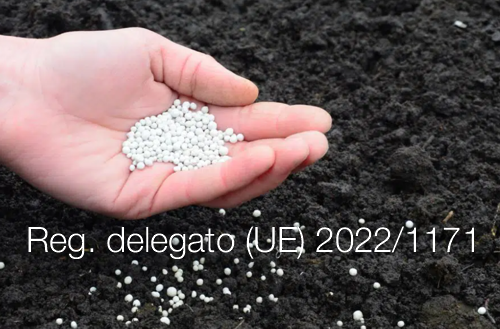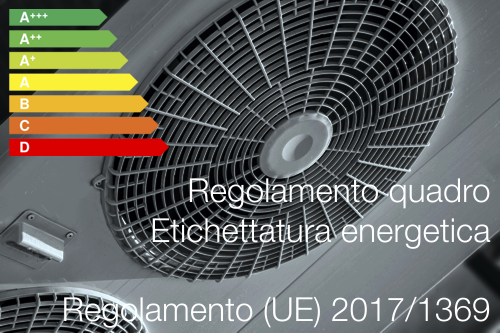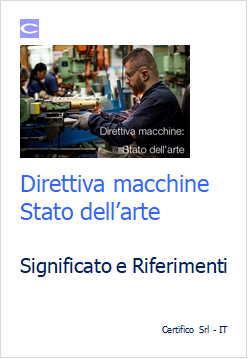Informazione tecnica HSE / 25 ° anno
/ Documenti disponibili:
45.665
/ Documenti scaricati: 34.704.833
/ Documenti scaricati: 34.704.833
ID 12506 | 04.01.2021 / Documento completo in allegato
Medical devices are products or equipment intended generally for a medical use and are regulated at Member State level. The Medical Devices and the In-Vitro Diagnostic Devices Regulations have introduced new responsibilities for the European Medicines Agency (EMA) and national competent authorities in the assessment of certain categories of medical device.
Medical devices in the EU have to undergo a conformity assessment to demonstrate that they meet legal requirements to ensure they are safe and perform as intended. EU Member States can designate accredited notified bodies to conduct conformity assessments.
The conformity assessment usually involves an audit of the manufacturer’s quality system and, depending on the type of device, a review of technical documentation from the manufacturer on the safety and performance of the device.
Manufacturers can place a CE (Conformité Européenne) mark on a medical device once it has passed a conformity assessment.
Medical devices legislation
The adoption in April 2017 of Regulation (EU) 2017/745 on Medical Devices (MDR) and Regulation (EU) 2017/746 on In-Vitro Diagnostic Devices (IVDR) changed the European legal framework for medical devices, introducing new responsibilities for EMA and for national competent authorities. Both Regulations entered into force in May 2017 and have a staggered transitional period.
On 23 April 2020, the European Parliament and the Council of the EU adopted a proposal to extend the transitional period of the Medical Devices Regulation by one year - until 26 May 2021.
This measure aims to avoid shortages of medical devices during the ongoing COVID-19 pandemic due to the limited capacity of national competent authorities or notified bodies to implement the Regulation.
For more information, see:
Regulation (EU) 2020/561 of the European Parliament and of the Council of 23 April 2020 amending Regulation (EU) 2017/745 on medical devices, as regards the dates of application of certain of its provisions
The MDR has a transitional period of four years and will fully apply from 26 May 2021. The IVDR has a transitional period of five years and will fully apply from 26 May 2022.
During the transitional period, manufacturers can opt to place medical devices on the market under the applicable EU Directives (93/42/EEC, 98/79/EC and 90/385/EEC) or under the new Regulations if they fully comply with these.
For guidance on the implementation of the new Regulations, see:
Questions and answers on implementation of the medical devices and in vitro diagnostic medical devices Regulations ((EU) 2017/745 and (EU) 2017/746)
Questions and answers on implementation of the medical devices and in vitro diagnostic medical devices Regulations ((EU) 2017/745 and (EU) 2017/746) - tracked changes
Medicinal products that include a medical device (‘combination products’)
Some medicines are used in combination with a medical device, usually to enable the delivery of the medicine.
If the principle intended action of the combination product is achieved by the medicine, the entire product is regulated as a medicinal product under Directive 2001/83/EC or Regulation (EC) No 726/2004.
There are two types of combination:
integral: the medicinal product and device form a single integrated product e.g. pre-filled syringes and pens, patches for transdermal drug delivery and pre-filled inhalers;
co-packaged: the medicinal product and the device are separate items contained in the same pack e.g. reusable pen for insulin cartridges, tablet delivery system with controller for pain management.
Medical devices that are co-packaged or obtained separately must be CE marked in accordance with the medical device legislation.
Article 117 of the MDR introduced a new requirement for medicines with an integral device. From 26 May 2021, the marketing authorisation application should include a CE certificate for the device or, if it is not CE marked but would need to be certified if marketed separately, the applicant must include an opinion from a notified body on the conformity of the device. This requirement does not apply to Class I devices (non-sterile, non-measuring). For further information, see PDF iconQuestions and answers on implementation of the medical devices and in vitro diagnostic medical devices Regulations ((EU) 2017/745 and (EU) 2017/746)
Role of EMA
The Agency is responsible for evaluating the quality, safety and efficacy of marketing authorisation applications assessed through the centralised procedure, including the safety and performance of the medical device in relation to its use with the medicinal product.
On 3 June 2019, EMA released for a 3-month public consultation a guideline on quality requirements for regulatory submissions for medicines that include a medical device (drug-device combinations). The device can be integral, co-packaged or obtained separately.
Quality requirements for drug-device combinations
The guideline clarifies expectations laid down in Directive 2001/83/EC and addresses the new obligations in the MDR, in particular the requirements under Article 117.
EMA will finalise the guideline before the entry into force of the MDR on 26 May 2021.
Medical devices with an ancillary medicinal substance
A medical device may contain an ancillary medicinal substance to support the proper functioning of the device. These products fall under the medical devices legislation and must be CE marked.
Examples of medical devices with an ancillary medicinal substance include drug-eluting stents, bone cement containing an antibiotic, catheters coated with heparin or an antibiotic agent and condoms coated with spermicides.
Role of EMA
Before it can issue a CE certificate, the notified body must seek a scientific opinion from the Agency on the quality and safety of the ancillary substance if it is derived from human blood or human plasma, or if it is within the scope of the centralised procedure for the authorisation of medicines.
- human medicines containing a new active substance to treat:
- human immunodeficiency virus (HIV) or acquired immune deficiency syndrome (AIDS);
- cancer;
- diabetes;
- neurodegenerative diseases;
- auto-immune and other immune dysfunctions;
viral diseases.
- medicines derived from biotechnology processes, such as genetic engineering;
- advanced-therapy medicines, such as gene-therapy, somatic cell-therapy or tissue-engineered medicines;
- orphan medicines (medicines for rare diseases);
- veterinary medicines for use as growth or yield enhancers.
It is optional for other medicines:
- containing new active substances for indications other than those stated above;
- that are a significant therapeutic, scientific or technical innovation;
- whose authorisation would be in the interest of public or animal health at EU level.
Today, the great majority of new, innovative medicines pass through the centralised authorisation procedure in order to be marketed in the EU.
For other substances, the notified body can seek the opinion from a national competent authority or EMA e.g. in cases where the Agency has already evaluated a medicine containing the same medicinal substance.
EMA publishes consultation procedure public assessment reports (CPAR) on its scientific opinions.
For information on the consultation procedure to seek an EMA scientific opinion, see Consultation procedure for ancillary medicinal substances in medical devices.
Companion diagnostics ('in-vitro diagnostics')
A companion diagnostic is an in-vitro diagnostic test that supports the safe and effective use of a specific medicinal product, by identifying patients that are suitable or unsuitable for treatment.
The In-Vitro Diagnostic Devices Regulation introduces a new classification system for companion diagnostics and the obligation to undergo a conformity assessment by a notified body.
Role of EMA
Before it can issue a CE certificate, the notified body must seek a scientific opinion from the Agency on the suitability of the companion diagnostic to the medicinal product concerned if:
the medicinal product falls exclusively within the scope of the centralised procedure for the authorisation of medicines, or
the medicinal product is already authorised through the centralised procedure, or
a marketing authorisation application for the medicinal product has been submitted through the centralised procedure.
For other substances, the notified body can seek the opinion from a national competent authority or EMA.
EMA will provide further information on the consultation procedure between the notified body and a competent authority or EMA.
Medical devices made of substances that are systemically absorbed
Some medical devices are made of substances that are absorbed by the human body to achieve their intended purpose.
These devices are normally introduced into the human body via an orifice or applied to the skin.
Role of EMA
Before it can issue a CE certificate, the notified body must seek a scientific opinion from EMA or a national competent authority on the compliance of the substance with the requirements laid down in Annex I to Directive 2001/83/EC.
EMA will provide further information on the consultation procedure between the notified body and a competent authority or EMA.
Borderline products
Borderline products are complex healthcare products for which there is uncertainty over which regulatory framework applies.
Common borderlines are between medicinal products, medical devices, cosmetics, biocidal products, herbal medicines and food supplements.
National competent authorities classify borderline products either as medicinal products or, for example, as medical devices on a case-by-case basis. This determines the applicable regulatory framework.
Applicants who are unclear on the correct classification of their product should consult a national competent authority and provide information on the product's composition and constituents, a scientific explanation of the mode of action and its intended purpose.
Role of EMA
The Medical Devices Regulation foresees that the European Commission may consult the Agency on products that borderline with medicines.
EMA's Innovation Task Force provides advice to medicine developers on eligibility to EMA procedures relating to the research and development of borderline products.
...
Fonte: EMA
Collegati

Regolamento delegato (UE) 2022/1171 della Commissione del 22 marzo 2022 che modifica gli allegati II, III e IV del...

ID 4419 | 25.02.2022
Regolamento (UE) 2017/1369 del Parlamento Europea e del Consiglio del 4 luglio 2017 che istituisce un quadro per l...

Applicazione del concetto di "Stato dell'Arte" alla Direttiva macchine con riferimenti.
Con la Guida alla Direttiva macchine 2006/42/CE Ed. 2.1 Luglio 2017, si precis...
Testata editoriale iscritta al n. 22/2024 del registro periodici della cancelleria del Tribunale di Perugia in data 19.11.2024